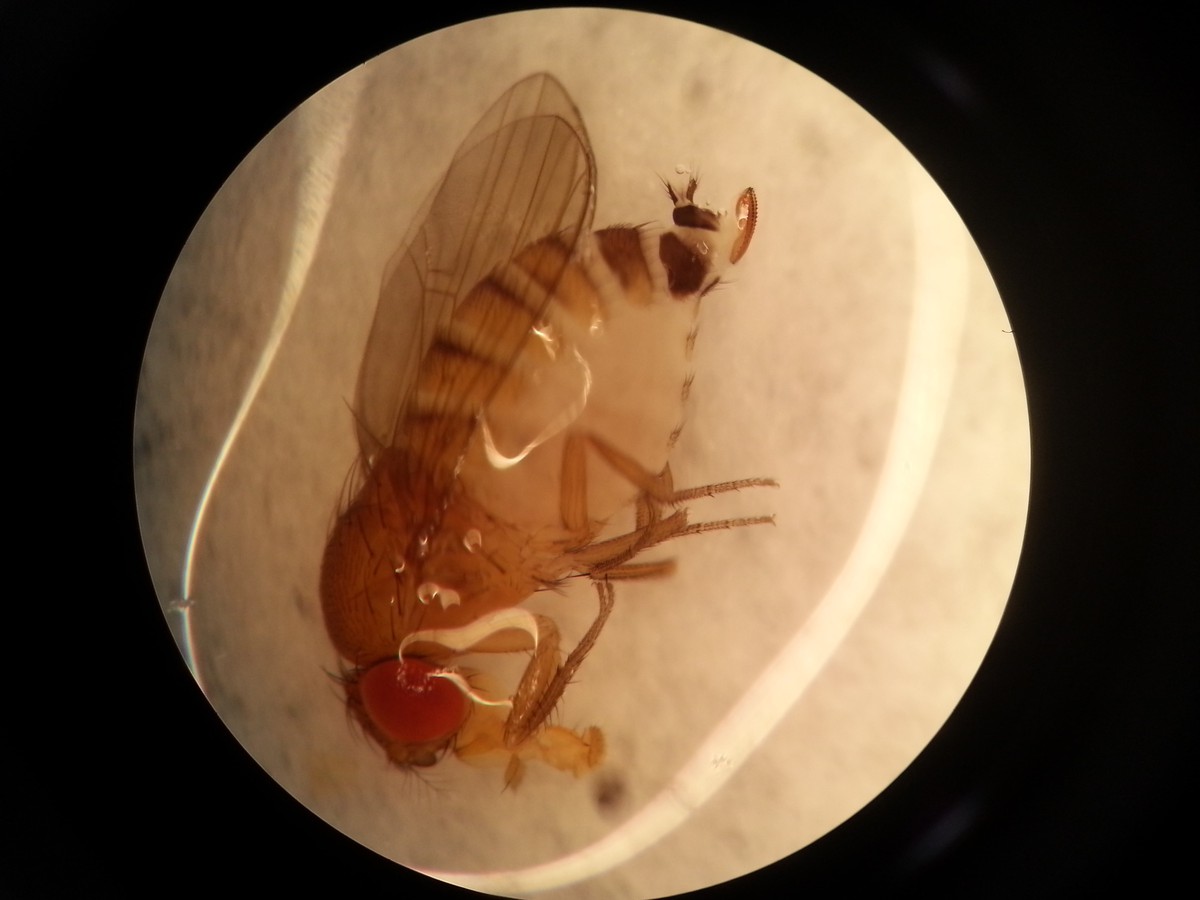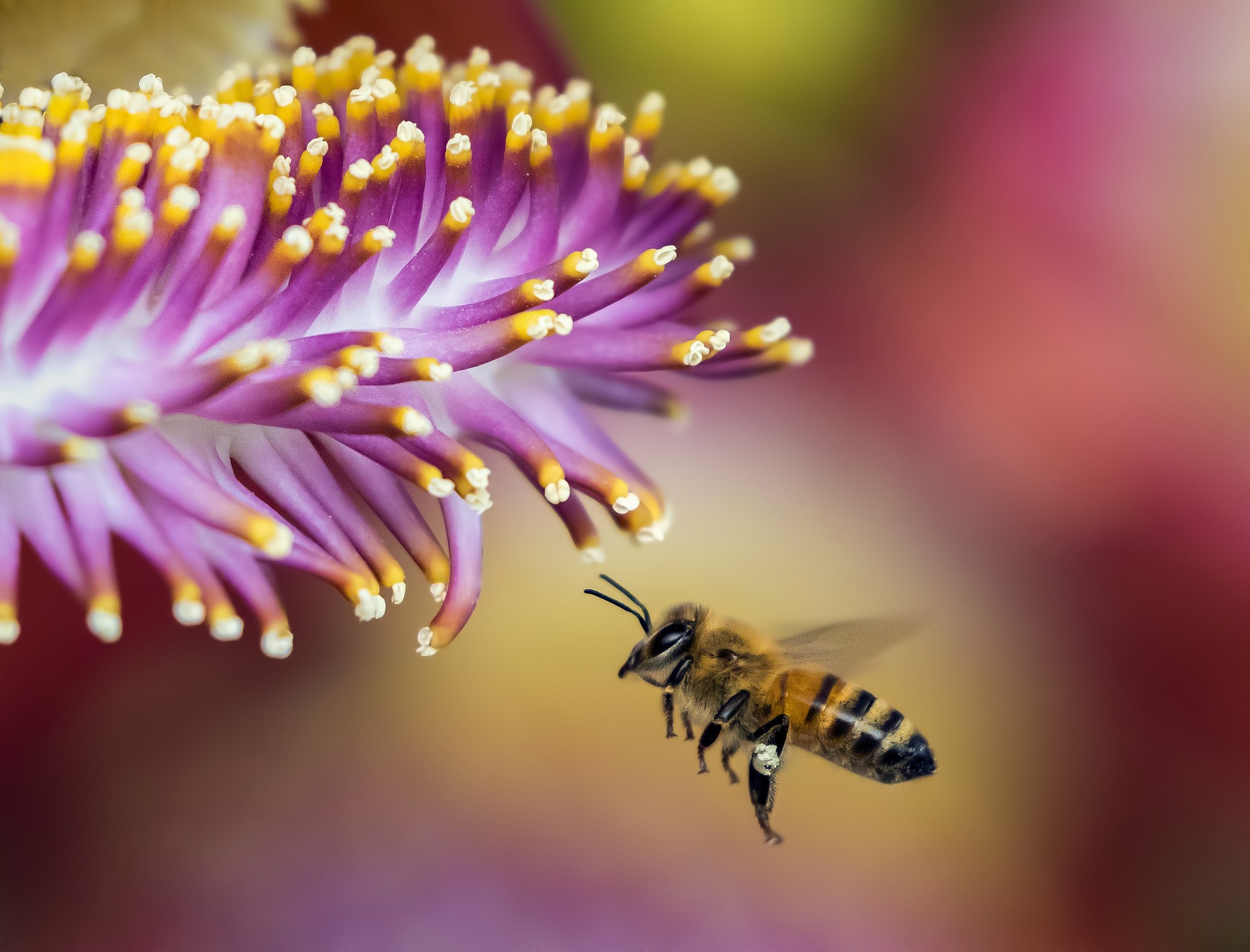Investigating insect impacts on berry crops
Rufus Isaacs, professor in the Michigan State University Department of Entomology, protects Michigan berry crops from invasive pests and examines crop pollination.

Rufus Isaacs, professor in the Michigan State University (MSU) Department of Entomology, studies pest management and pollination strategies for berry crops, including blueberries, grapes (yes, they’re technically berries!), raspberries, blackberries and strawberries.
His research supports an abundant, safe food supply for consumers, while reducing management costs and risk for farmers.
“I think it's all related to food security, both from the perspective of the pollination being so well-tied to yield and then the pests being something that need to be managed for consumers to have insect-free fruit,” Isaacs said.
One of the pests Isaacs and his team have been working on is the blueberry stem gall wasp, a tiny insect that lays eggs in blueberry shoots. Some varieties respond by swelling and making a gall, or a mass of new tissue to protect the developing larvae.
Isaacs and Patrick Edger, assistant professor in the MSU Department of Horticulture, are collaborating on blueberry stem gall wasp research funded by the U.S. Department of Agriculture, MSU Rackham Foundation Research Endowment, Michigan Department of Agriculture and Rural Development, and Michigan Blueberry Commission. Edger works to breed blueberry cultivars resistant to the pest, while Isaacs examines management strategies, including insecticide applications.
“There are a few new treatments that we evaluated in 2019 that look really promising. We're recommending those to farmers for this 2020 season, and very hopeful those will get this pest under control,” Isaacs said. “Some farms have been taking susceptible cultivars out and replanting those with resistant cultivars. Overall, we expect the economic impact of this pest to be much lower (in the future).”
Isaacs estimates that 10% of Michigan’s blueberry crop acreage has been affected by the blueberry stem gall wasp, causing yield reductions and additional economic loss spent on previous pruning and spraying activities.
Another invasive pest Isaacs and his group focus on is spotted wing drosophila, or SWD, a fly that attacks berries and cherries. Originally from Asia, SWD has been in the U.S. for approximately 10 years. SWD burrow into the fruit and lay eggs, causing the flesh to break down, discolor and collapse.

Issacs and his research team are working with colleagues across the U.S. to determine how to best control SWD in berry crops. Recent global studies offer a plethora of information on the biology of SWD, which Issacs expects will unlock new opportunities for disrupting the pest’s lifecycle.
“Currently, growers are applying combinations of pruning, mulch and insecticides to their fields to control SWD,” he said. “There is also some interesting news on the biological control front, with a promising natural enemy that attaches the larvae of SWD in its native range being reviewed for potential future release.”
In addition to his work investigating and developing pest management strategies, Isaacs also studies wild bees to determine which are important for crop pollination.
“Almost all of our fruits and vegetable crops that we grow in Michigan require bees to move pollen around when they're in flower so that they get fertilized. Well pollinated flowers produce the biggest fruits and vegetables,” he said. “Bees are really critical to our agricultural industries in Michigan.”

Isaacs is currently collaborating with Meghan Milbrath, academic specialist in the MSU Department of Entomology, on several bee-related projects. One of these projects, led by entomology Ph.D. candidate Gabriela Quinlan, aims to learn more about what plants honey bees visit when they’re in bee yards in the summer by identifying the pollen they bring back to their colonies. Another project is to determine what pesticide residues are being collected by honeybees and bumblebees while they are working to pollinate crops in southwest Michigan.
“Keeping bees healthy is essential for maintaining effective pollination of fruits and vegetables," Isaacs said. "We hope our research provides guidance on how they can access nutritionally-supportive and safe environments in our state”
Isaacs said he is honored to play an integral role in Michigan’s economy by developing management strategies to mitigate pests and helping berry crops to grow in abundance.
“I see my research as connected to keeping farmland on the landscape. We're doing our tiny part to keep farms in business and successful,” he said. “With all the pressures on land use, especially in the western side of Michigan, where there's so much interest in development for housing, I think it all ties in.”
This work allows agriculture to flourish, Isaacs said.
“In the long run, the work that we and others at MSU are doing to help agriculture helps keep those businesses profitable for this generation, and also for the next,” he said.



 Print
Print Email
Email





